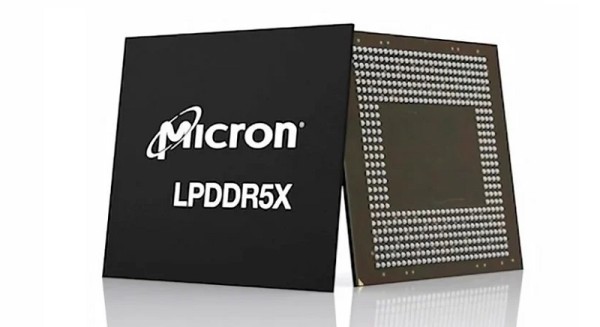AMD Athlon 64 AM2 + Epox MF4-Ultra – DDR2 u zelenom ruhu
Datum objave 26.06.2006 - Denis Arunović
Zaključak (conclusion)
Novi Athloni su za AMD svakako veliki napredak. U pitanju nisu toliko performanse koliko ujedinjenje stolnih procesora pod jednim te istim socketom te dodavanje podrške za DDR2 memoriju koja je napokon postala dovoljno jeftina i brza da bi mogla konkurirati DDR-u. S druge strane, za nadjačavanje performansi klasične DDR memorije je potrebno imati DDR2 800 MHz. Premda je 800-megahercnu memoriju moguće lako nabaviti, u većini slučajeva ona ima visoku cijenu s obzirom da se najčešće radi o memoriji nekog brand proizvođača (Corsair, OCZ…). Još jedna bitna stvar u cijeloj priči je smanjenje potrošnje koju je AMD uspio postići na procesorima za Socket AM2. Iznimka je jedino Athlon 64 FX-62, no svi ostali procesori troše manje nego njihovi prethodnici. Uz to, tu su također i procesori s niskom potrošnjom od 62 ili 35 vata koji će mnogima biti jako zanimljivi, unatoč visokoj cijeni.
Jasno je da je prelazak na Socket AM2 izveden prilično elegantno, no i dalje stoji činjenica da se interna arhitektura AMD-ovih procesora u osnovi nije mijenjala od predstavljanja arhitekture K8 Hammer. Iz istog razloga novi procesori nude rast performansi samo ako je riječ o modelima s višim taktom od prethodnika. Kako AMD-ov arh-rival Intel uskoro namjerava predstaviti procesore s redizajniranom arhitekturom, jasno je da Athlone 64 za Socket AM2 pravi izazov tek očekuje.
Model Athlon 64 3200+ koji smo mi imali prilike isprobati je prava mala zvjerčica. Premda na tvorničkom taktu nije posebno snažan, ima potrošnju od samo 62 W što obećava tiho računalo. Ako ste pak malo ekstremniji, procesor vas zasigurno neće iznevjeriti što se tiče overclockanja – maksimalni takt kojeg smo uspjeli postići je 2,66 GHz, 660 MHz više od tvorničkog takta.
Što se pak Epoxove matične ploče tiče, općenito se radi o solidnom proizvodu kojeg muče neke mušice. Ploča je namijenjena donjem segmentu tržišta, pa je zato i bazirana na nForce4 čipsetu. To zapravo nije nikakav problem jer jedino što gubite u odnosu na novije čipsete su par konektora te nešto moćniji integrirani zvuk.
Tijekom testiranja s pločom nismo imali mnogo problema. Zamjerilo nam se to što funkcija "Power On After Power Fail" nije radila, a isti smo problem imali s opcijom za uključivanje računala preko tipkovnice. Tu su također i neki problemi s layoutom. ATX konektori su u standardnoj Epoxovoj maniri postavljeni na sredini ploče, ali mnogo veći problem je postavljanje jumpera za resetiranje BIOS-a preblizu utoru za grafičku karticu (nije mu moguće pristupiti ako koristimo karticu s dvoslotnim hladnjakom). Što se tiče opcija za overclockanje, tu je Epox odradio dobar posao, pa smo bez problema pogurali naš testni Athlon 64 do maksimalnih granica. Pri overclockanju same matične ploče, u "zid" smo udarili pri brzini sabirnice od 278 MHz što je solidan rezultat. Zadnji zanimljiv feature koji ova ploča nudi svakako treba spomenuti. Riječ je o Ghost BIOS čipu koji Epox implementira i na jeftinije ploče (kao što je recimo ova), a omogućava nam lako vraćanje starih postavki odnosno stare verzije BIOS-a, ako nešto zakaže pri flashanju ili overclockanju.
Ploču u vrijeme objave članka nismo mogli pronaći u hrvatskim trgovinama, ali pretpostavljamo da će joj cijena biti oko 650 kn zajedno s PDV-om.
Conclusion in english
For AMD, new Athlons are a big step forward. The main thing about new CPUs is not their performance, but unification of all AMD’s desktop CPUs under single socket, as well as added support for DDR2 memory which finally became cheap enough and fast enough to be competitive with regular DDR memory. On other hand, it has to be noted that only DDR2 memory on 800 MHz can outperform standard DDR400. Altough such fast DDR2 memory can be easily bought on the market, it still has a pretty high price tag because most modules are made by premium brand memory manufacturers like Corsair and OCZ. One more important thing in Athlon 64 Socket AM2 story is reduction of power consumption which AMD managed to achieve with new CPUs. Only exception is Athlon 64 FX-62, but all other CPUs consume much less power than their Socket 939 counterparts. To sweeten up the deal, AMD even introduced low power variants of certain desktop CPUs which have a maximum power draw of 62 or 35 watts. Altough these CPUs have higher price than regular models, they are very interesting products for enthusiast and users who are building quiet systems.
It’s a fact that transition to Socket AM2 was executed in a very elegant manner, but one issue still remains – AMD did not change architecture of its CPUs since the launch of first K8 Hammer CPU. This is the reason why new CPUs are showing performance increase based only on their clock (on models which actually have a higher clock). As AMD’s arch-rival Intel soon plans to launch CPUs based on new architecture, Socket AM2 CPUs still need to face their biggest challenge.
Athlon 64 3200+ which we had pleasure testing in this article is a little beast. Altough this CPU is not that powerful on stock speed, it has very low power draw of mere 62 watts. If you like overclocking your CPUs, model we tested will not disappoint you. Maximal clock we achieved during our test was 2,66 GHz, 660 MHz more than stock clock.
As for Epox MF4-Ultra motherboard which helped us review Socket AM2 CPU, it is solid product with a few negative quirks. Motheboard is made for lower market segment and that’s the primary reason why it is based on older nForce4 Ultra chipset. In practice, this is not a problem because in comparison to new AM2 chipsets, only thing you lose are few additional connectors and more powerfull integrated sound solution.
During our testing, we didn’t encounter much problems with Epox board. One notable problem is that "Power On After Power Fail" and "Keyboard Power On" options are not working, regardless of their settings in BIOS. Also, there are some problems with the layout. ATX connectors are positioned in the center of the board, in standard Epox manner, but much greater problem is position of BIOS reset jumper. It is positioned to below and too close to PCI-E graphic card slot which means that it is blocked by a GFX cooler if a card with dual-slot cooling is installed on the motheboard (for example GeForce 7900 GTX which we used in our test). Regarding options for overclocking, Epox did a good job so we had no problems with pushing our test CPU to its limits. As for overclocking the board itself, we’ve hit a "wall" at 278 MHz which is a pretty solid result. Last notable feature of MF4-Ultra is Ghost BIOS chip which Epox integrates even on cheaper solutions like this one. Chip allows users to easily go back to old setting in BIOS or reflash a BIOS chip with a different version of firmware if the original version gets corrupted for some reason (bad flashing or overclocking).
Epox MF4-Ultra at the time of publishing this articles is still not available in croatian IT stores, but when it shows up, we think its price will be around 650 kn, PDV (VAT) included.
| AMD Athlon 64 3200+ Socket AM2 | |||
| Pozitivno + | Nisko zagrijavanje i solidne performanse. Vrlo dobar overclocker. | ||
| Negativno - | Cijena nešto više nego kod Socket 939 modela jednakog takta. Za postizanje performansi jednakih Socket 939 sistemima, nužno imati DDR2 800 MHz. | ||
| Ocjena |
|
||
| Ustupili | ISA Hardware, tel.: 01/600-9987 | ||

| Epox MF4-Ultra | |||
| Pozitivno + | Stabilna, BIOS nema velikih mušica unatoč ranoj reviziji. Široki spektar opcija za overclockanje ponuđenih u BIOS-u. Solidan overclocker sama po sebi. Na ploču implementiran Ghost BIOS čip što je jako korisno za sve one koji vole eksperimentirati s raznim BIOS-ima i postavkama. | ||
| Negativno - | Ruku na srce, ipak se radi o starijem čipsetu. Problemi s uključivanjem računala preko opcija "Power On After Power Fail" i "Power On on keyboard" (ne rade). Problematična pozicija jumpera za resetiranje BIOS-a. | ||
| Ocjena |
|
||
| Ustupili | EpoX | ||

Forum
Objavljeno prije 1 sat
Filmovi - dojmovi, komentari i preporukeObjavljeno prije 2 sata
Kamere oko kućeObjavljeno prije 2 sata
AutomobiliObjavljeno prije 3 sata
Mreža po stanuObjavljeno prije 3 sata
SlusaliceNovosti
Evo na kojim laptopima se možete najbolje zabaviti
Blagdansko vrijeme obično donosi više slobodnog vremena za opuštanje i zabavu. Volite li videoigre, imamo preporuku koje laptope odabrati. Neki ljudi ne kriju, dok drugi tek stidljivo priznaju da im videoigre spadaju u omiljenu zabavu. Čak... Pročitaj više
Honor GT Oasis - otvara novo natjecanje za zaštitu očiju u e-sportu
HonorGT službeno je izašao. Prednja strana opremljena je 6.7-inčnim AI Oasis inovativnim zaslonom za zaštitu očiju. Usvaja tehnologiju zatamnjenja ultra visoke frekvencije od 3840 Hz i nultog rizika, što se može nazvati prekretnicom u kontr... Pročitaj više
Američka ministrica trgovine: "Beskorisno je suzdržavati Kinu u proizvodnji čipova"
Američka ministrica trgovine Gina Raimondo nedavno je u intervjuu izjavila da bi se SAD trebao više usredotočiti na domaća ulaganja u inovacije umjesto nametanja zabrana i sankcija. Rekla je: "Pokušaj obuzdavanja Kine je uzaludan zadatak."... Pročitaj više
Novi pametni telefoni su gori od starih! Što to znači za korisnike?
Trend smanjenja performansi novih pametnih telefona u odnosu na stare modele izaziva zabrinutost među korisnicima, a u mnogim slučajevima to može biti iznenađujuće. U 2022. godini, na primjer, POCO X4 Pro bio je znatno sporiji od svog preth... Pročitaj više
Utjecaj RAM-a na performanse pametnog telefona
RAM (Random Access Memory) pametnog telefona igra važnu ulogu u njegovim performansama, no utjecaj RAM-a na brzinu telefona nije uvijek izravan. Količina RAM-a omogućuje uređaju da obavlja više zadataka u pozadini, ali sama količina radne m... Pročitaj više
Sve novosti




